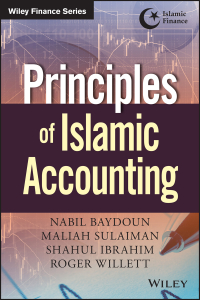Austin Enterprises makes and sells three types of dress shirts. Management is trying to determine the most profitable mix. Sales prices, demand, and use of manufacturing inputs follow. Basic $ 30 20,000 Classic $ 64 10,000 Formal $ 190 30,000 Sales price Maximun annual demand (units) Input requirement per unit Direct material Direct labor 0.5 yards 0.7 hours 0.3 yards 2 hours 0.5 yards 7 hours $ $ $ costs Variable costs Materials Direct labor Factory overhead Marketing Annual fixed costs Manufacturing Marketing Administration 20 per yard 16 per hour 4 per direct labor-hour 10 % of sales price $36,000 $ 8,000 $38,000 The company faces two limits: (1) the volume of each type of shirt that it can sell (see maximum annual demand) and (2) 30.000 direct labor-hours per year caused by the plant layout Required: a-1. Assuming the company can satisfy the annual demand, calculate the contribution morgin for each type of dress shirt using the table below a-2. How much operating profit could the company earn if it were able to satisfy the annual demand? b-1. Compute the contribution margin for each shirt per the constrained resource, direct labor. b-2. Which of the three product lines makes the most profitable use of the constrained resource, direct labor? c. Given the information in the problem so far, what product mix do you recommend? d-1. Calculate the contribution margin for each type of dress shirt using the table below d-2. How much operating profit should your recommended product mix generate? e. Suppose that the company could expand its labor capacity by running an extra shift that could provide up to 10,000 more hours. The direct labor cost would increase from $16 to $19 per hour for all hours of direct labor used during the additional shift. What additional product(s) should Austin manufacture and what additional profit would be expected with the use of the added shift? Reg A1 Reg A2 Req B1 Req B2 Reqc Reg Di Reg D2 Reg E Assuming the company can satisfy the annual demand, calculate the contribution margin for each type of dress shirt using the table below. Basic Classic Formal Total revenue Total variable costs Contribution margin $ 01$ 0 $ Reg A2 > Reg A1 Reg A2 Req B1 Req B2 Reqc Req D1 Reg D2 Req E How much operating profit could the company earn if it were able to satisfy the annual demand? Operating profit Reg A1 Reg A2 Req B1 Req B2 Reg C Reg D1 Reg D2 Req E Compute the contribution margin for each shirt per the constrained resource, direct labor. (Do not round intermediate calculations. Round your final answers to 3 decimal places.) Basic Classic Formal Contribution margin Calculate the contribution margin for each type of dress shirt using the table below. (Round down "Units produced" to nearest whole unit.) Basic Classic Total revenue Less variable manufacturing costs: Total costs Contribution margin 0 0 $ $ 0 Reg A1 Reg A2 Req B1 Req B2 Reqc Reg DI Reg D2 Req How much operating profit should your recommended product mix generate? (Round down "Units produced" to nearest whole unit.) Operating prom Reg A1 Req A2 Req B1 Reg B2 Reg C Reg D1 Reg D2 ReqE Suppose that the company could expand its labor capacity by running an extra shift that could provide up to 10,000 more hours. The direct labor cost would increase from $16 to $19 per hour for all hours of direct labor used during the additional shift. What additional product(s) should Austin manufacture and what additional profit would be expected with the use of the added shift? (Round down "Units produced" to nearest whole number and final answer to 2 decimal places.) Show less Austin should manufacture Additional profit would be














